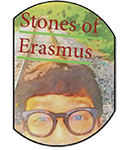$4.50
Adonis and Hyacinth And Other Flower Myths in Greek Mythology for MS & HS ELA
Who are Adonis and Hyacinth? Adonis, celebrated in Greek mythology as the epitome of male beauty, embodies the ideal of the ‘athlete type’ and romantic love. Hyacinth, another figure of striking beauty, becomes the object of Apollo’s affection but tragically meets his end, weaving a narrative rich in divine passion and sorrow. The story of Crocus adds to these flower myths, symbolizing the perpetual cycle of birth, death, and rebirth. In a different vein, Admetus—devoted husband of Alcestis—mourns when she dies in his place; moved by his grief, Heracles wrestles Death and brings Alcestis back from Hades.
These tales offer students a diverse tapestry of themes to explore, including varied representations of love and queer romance, the symbolism of flowers, standards of beauty, heroism, and tragedy. They provide fertile ground for making connections to literature, art, and popular culture, enriching the classroom discourse.
This Resource Includes the Following Features:
- Access to Print and Digital Versions (PDF, Google Workspace)
- Three-Day Lesson Calendar (with Teacher’s Notes)
- Key Characters and Places Anchor Chart
- Orient learners by identifying the cast of characters and their relationship to each other and the gods.
- 6 Reading Cards — Designed to effectively combine mythological narratives with artistic representations, enhancing the educational value of the content.
- Admetus and Alcestis:
- Adonis
- Hyacinth
- Crocus
- Smilax
- And art and literature connections!
- 1 Note-taking template
- 15-count Question Bank
- Reading comprehension questions have a vocabulary in context, analysis, and inference questions.
- 1 Exit Ticket
- Exit tickets are a way to get data about your students’ understanding of the lesson right before the class is finished. Collect these exit tickets and quickly see what your students have learned.
- Frayer Model Vocabulary Template (with one student sample)
- Frayer models are a way to get kids to think about vocabulary visually in a four-section square — A square for meaning, one for examples, another for non-examples, and a sketch. It is impressive to see the work they produce. A great way to decorate your classroom to showcase your kids’ vocabulary-in-text understanding. The cards can contain terms, geography, challenging words (as well as contextual entries that fit the story).
- 1 Further Reading List
- Don’t disregard this further reading list if you think it is merely a bibliography. Share the list with your students or have them do projects based on the available research. Assign different sources to students and organize presentations where learning can go deeper into the story.
- Answer Key & Standards Alignment Chart (Common Core, VA SOL, and TEKS)
I created this resource with middle and high school students in mind. It is designed for an English Language Arts Mythology unit —
- Part of a Larger Mythology Suite from Stones of Erasmus
- Apollo
- Aphrodite
- Europa and the Bull
- Pygmalion and Galatea
- Use this resource as a stand-alone lesson or pair it with a larger unit on queer love in literature, Robert Graves’s Complete Myths, or Edith Hamilton’s Mythology.
Please note that this educational digital download complements a unit on Greek Mythology.
© 2023-2025 stonesoferasmus.com
